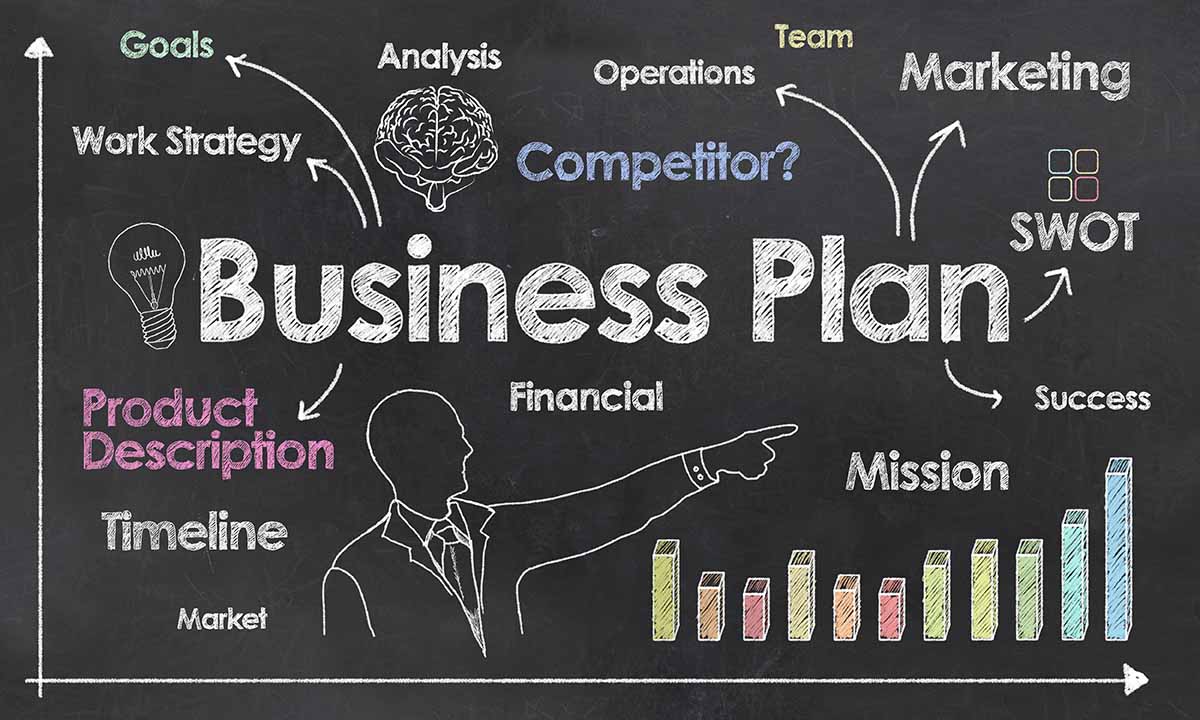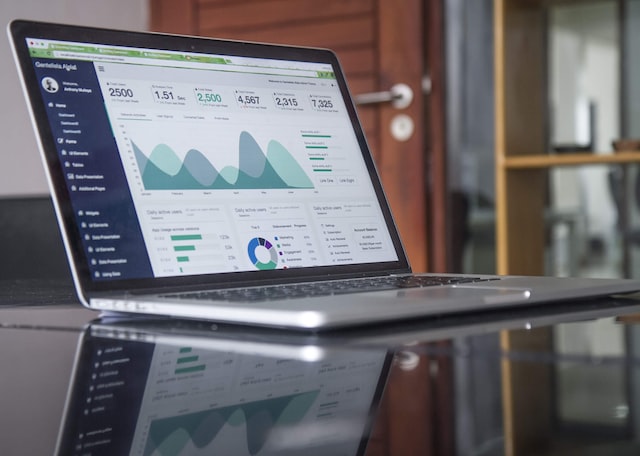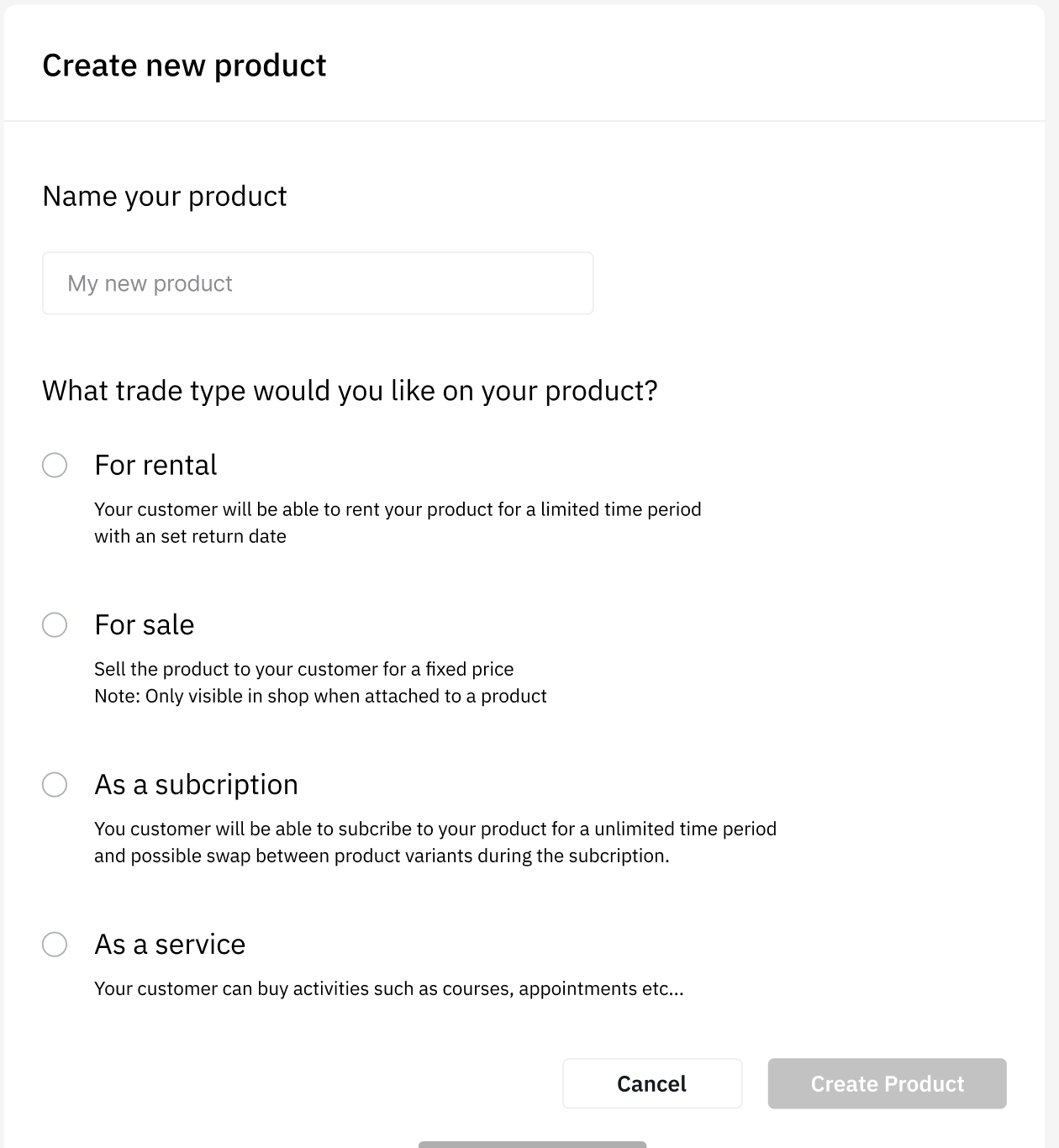

How to create a business plan for rental business
It’s not enough to just have a great idea so you need to create a business plan with the right strategy, marketing plan and most importantly knowing how and what to execute

By Christian Wilkens
If you are engaged in the rental business or planning to be, whether it is a short term equipment rental or long term subscriptions model, it becomes increasingly important to secure a good rental software and to ask the question: What expectations do customers have for a good online experience?
‘’As with any industry, there will be winners and losers. We predict that those rental companies that are able to embrace new technology, digitise their operations and automate manual labour to gain a competitive advantage in a fierce market, will be the winners. Those who don’t will be the losers. ‘’
Today your customers are well accustomed to do our shopping online and expect the same smooth and friction free experience from your rental service. It has become increasingly important for all businesses to deliver a good online experience, both to attract new customers, but also to make existing customers return. As with any industry, there will be winners and losers. We predict that those rental companies that are able to embrace new technology, digitise their operations and automate manual labour to gain a competitive advantage in a fierce market, will be the winners. Those who don’t will be the losers.
Circular economy has become an integral part of the global economy and will continue to play an even bigger part going forward with new commercial players on the market every day. It is becoming more and more difficult to compete as a rental business, if you do not engage in modern technology to improve your bottom line numbers.
Creating good customer experiences and using an efficient management and booking system are key factors when running a rental business. We have gathered some insights from our most successful customers and must-haves for your rental software to help you create a modern online store and customer journey for your rental business.
Different industries and businesses have different needs and goals. Whether you are a sport and outdoor rental business, tools and machinery rental, retail brand or a start-up or new service, you will face certain challenges and have a dream of growth in common.
Here we listed some of the most recognisable pain points and dream scenarios.
Pain points:
Dream scenarios:
Prices
Some rental software will seem expensive and others very cheap at first glance, but there is a simple explanation for that. It is comparable to buying a Mercedes vs buying a Hyundai. Both will get you from a to b but differ hugely in quality, options and longevity.
The cheaper solutions can give you a good starting point, but you will most likely experience a lot of growing pains when scaling, simply because many of the cheaper solutions don’t offer the same flexibility as some of the more expensive solutions. If you have a specific need for a feature, that is not already supported, they can get developers on it and develop “unique” solutions, specifically for that but that gets expensive real quick
Our advice is to see past prices and look closely on your specific needs and your growth ambition, what it takes to grow and compare that with the features provided by the rental software.
Our experience shows that you get your ROI faster when choosing a rental software that is built for growth, even though starting cost seems higher.

One of the main differences between a rental software and a traditional e-commerce site like WordPress or Wix, is the traditional e-commerce sites lack the ability to provide an efficient management system with sufficient live data about rental orders and inventory to the business merchant. A normal e-commerce web builder will do a decent job in making you a webshop that sells, but falls short on so many other areas.
A good rental software must contain these two functions:
First we will go through some of the expectations that your tech savvy customers will have for a website with booking software. Easy-to-use and fast working booking solution
Customer journey
Customers have huge expectations that you’ll be ultra flexible when it comes to handling orders around the clock. Using a rental software, you pretty much hand over all the workload of ordering back to the customer. They will do everything themselves from browsing, booking and paying and with self service gateways like Flinkey, Inlet or Sharebox, customers will pick up and deliver themselves as well. Most importantly you free up hours that you used to spend on answering phones and emails and other tedious manual tasks.
Good design and Mobile friendly
An online store has to be easy to navigate, have a clear design and true representation of the products. Responsive design is a crucial element, and means that your home page works well across different devices from pc and tablet to mobile. Around 50% of all e-commerce transactions happen on mobile. It is therefore very important to make sure that the online store is mobile friendly to not lose potential sales. Having a website that is easily customizable is essential to keep your look and feel modern and not outdated. If your website looks old fashioned, some customers will lose interest or even worse lack trust in your brand and not convert into a faithfully loyal customer.
Fast website
If your website is loading slowly or not presenting the rental products efficiently, you may risk the customer leave before they get started. This is also vital because search engines like Google reward fast working webpages and rank them higher, making them easier to find. Websites become slow if you are trying to build compartments and subpages that the original website provider was not intended for. Using too many plugins will also slow the site considerably, like using a normal e-commerce site and trying to build a good booking calendar on it. Use a good rental software with either a good API for your existing website or choose a rental software provider, with an already built website for you, containing all components that you require for your rental business. API is really well suited for bigger retailers and chains while start ups just need a complete package with a built webpage.
Calendar with availability
Modern consumers, when entering a new website, want a quick scope of what is available or already rented out. Applying a calendar with availability on each product and product category, will produce exactly that – a scope of availability and predictability. This will eliminate double bookings entirely.
PRO TIP: Adding the option to choose different variants and packages on f.ex. colours or sizes or a variety of accessories, that you sell with your rental product, allows the customer to complete the entire booking and for you to maximise profits.
Payment solutions
Make sure your rental system has the right payment solution with essential integrations, so customers are able to pay before they pick up the rental products and keep the flow. We see a lot of customers’ old websites have very limited options to make payment. This is a major big red flag for customers. If the payment is slow or difficult, studies show that customers will rather buy from someone else.

The management system is your main tool for handling customers, inquiries, inventory, orders and everything related to your business. Be careful here because a lot of e-commerce software providers do not even equip you with a standard dashboard to get your valuable data collection from. Find a system that fits your needs, have a good dashboard for overview, creates predictability, matches your growth ambitions and has a very simple process of implementation in your value chain.
Handling customer inquiries
The biggest pain point for rental companies is definitely order management. You just have too much to do at the same time every day. Handling orders from drop-in customers while drowning in phone calls, excel sheets and post-it notes. Basically having too many different systems and forcing them to work in collaboration, whether it is analogue to digital or vice versa or digital to digital, will never become close to efficient. Use a rental software that consolidates all traffic into one database.
Here is a list of some of the order management features you encounter with a good rental software.
Get a software that provides data from order and status tracking for each item. Manage orders by tracking their statuses and activity logs. This will create the predictability and
maximise utilisation rate of the rental products.
Customer database
A major benefit of a rental software is building a database of your customers.
Vital information for scaling like who are your top users? Who is booking what and much more. This gives you less hassle with coordination.
Get a full overview of which customers have booked what, get history and search easily in the customer register. This will help you understand buyer patterns that can aid your growth in the business and prepare you for large seasonal variations.
Good product descriptions are a very basic need, still many website owners underestimate this or do not have a program that allows them to attach descriptions properly to the product images. This helps to provide the customer with enough information about the item and gives them the opportunity to make an informative choice. In addition, investing in good descriptions and instructions for your products can save you a lot of unnecessary time on the phone and by email to guide your customers. Let’s be honest here, creating customer relations are very important, but you do not want to spend all day explaining the same things again and again over the phone or email, especially if you have a large inventory.
Although the customer has decided to use your rental products, that does not necessarily mean that they have enough knowledge about how the product is used. Good product information and blog posts on how to use the product can help to give the customer added value. It will also save you unnecessary follow-up requests, and reduce repair due to improper use of for example excavators or camper vans. There is also a lot of value in investing time on writing good texts and blog posts, as it will increase your SEO visibility on Google. This will increase visitors to your website and by this, increase your revenue potential.
Having different product types as a feature is one of these undervalued subjects that we see business owners haven’t really thought about when starting a new rental business. At Sharefox, we experience this as a somewhat bigger ‘’aha’’ moment for our customers, when we tell them all the possibilities of having different product types within your rental capabilities.

Not only does it give you additional revenue streams, it also creates a clear indication of what kind of rental business that you are. Maybe you are a short term equipment rental business or a long term subscription business. But most importantly, it gives you the opportunity to scale your business considerably.
We normally distinguish between 4 different types of product types.
Information on delivery or pickup locations for the product must be clear. This is an expected part of the customer’s purchase decision and is part of the assessment they make before making an order. During this phase, they consider, among other things, whether it is easy enough to rent the product, and if it requires the customer to spend a lot of time picking it up. Having a system that is integrated with shipping companies or self service systems will automatically fix the logistic issue.
We now see that there are more companies offering self service pickup and return. By this your customers don’t have to struggle with limited opening hours. This provides a great opportunity to create a full self service solution open 24/7 365.
With a comprehensive payment solution feature, you are keeping the customers attention and engagement until the very end of the customer journey. Make customers do the registration, booking and payment online by themselves. This is significant to secure revenue and avoid customers from suddenly making cancellations.
It’s a good idea to know your ideal customer profile (ICP) and which payment methods they prefer. The most common methods are still Visa, Mastercard and invoice. In recent years, different mobile payment applications have also become the preferred payment method among the younger generation in all industries. The different payment methods have clearly changed customers’ expectations on seamless payment methods.
Make sure you have a rental program that supports payments with a secure two step authenticator app. This is becoming more and more normalised in the fight against online identity fraud.
Credit checks
Are your customers actually able to pay the charged amounts? Certain rental systems also offer automatic credit checks for business customers when renting expensive rental machines like heavy machinery, ATV’s and cars.
Invoicing and accounting features
For corporate customers in B2B, invoice with a detailed order description is often the preferred option. If you are planning to attract big scale customers the rental system should support invoicing. In other words choose a rental system that is able to automatically create and send invoices to your clients. Some payment solutions also provide a deposit feature. Deposit is a useful additional feature in case of damage and late return of the rented products. This is normally extremely time consuming to do by hand, but luckily for you, there are systems that have automated this function.
Does spending too much time making accounting reports by hand sound familiar? If you are a start-up, surely it’s not accounting reports that you need to spend your efforts on for hours. Keeping track of income, expenses and taxes is something that should be fully automated. Integrate with for example Visma eAccounting, PowerOffice or Tripletex to transfer your bookings to your accounting company. This allows you to send and follow up invoices directly from your accounting system.
Digital documents
Being able to offer digital quotes, contracts, waivers and terms and conditions and let clients sign electronically, will not only create a more simple workflow for you, but also make the customer journey even more smooth.
Get a digital inventory management system where you’ll have an overview of your orders, your customers, what’s rented out when and where.

A minimum requirement here would be an inventory dashboard with a calendar view, where you’ll have an up-to-date overview of which products are rented out and which products are available. This is an important planning tool for running your rental operation, especially if your stock is large and complex.
Make sure you create a good utilisation rate and get a good overview of the warehouse. It also creates a better structure to have the ability to see which inventory is available for real-time rentals. It pays to create unique IDs on the inventory, categorise the products by different categories and use images of the product to keep track.
PRO TIP: Use a system that works in bulk mode if you have hundreds or thousands of items in inventory.
Some systems even support barcode scanning for inventory purposes. A barcode can be used as a unique identifier of your equipment and can automatically assign products to orders.
With barcodes you can:
A good pricing tool will quickly become your favourite power ranger in your quest for scalability. Different rental businesses have different needs in regards to pricing their rental products. Beyond simple daily rental prices, shops may want to employ hourly pricing, half-day prices, different pricing limits for larger objects or other complex price configurations.
Being able to set up advanced and flexible pricing like hourly – or long term pricing for your different products and services is a really good feature to have.

Add discounts for targeted campaigns, orders or even customers will make marketing much more relevant and customer satisfaction higher.
A good rental solution should have a clear reporting system that gives you ongoing overview and updates. You should see the number of new orders and products rented out, earnings per product, capacity utilisation for the period and more.
Keep track of earnings from day to day, month to month and year to year. Find out which products are most popular and which are rented out in different periods. Analyse earnings of the rental business and compare different periods. A good reporting system enables a more efficient rental company and allows you to work more strategically to achieve your growth goals.
The biggest selling point for switching to a good flexible rental software is the ability to grow and scale your rental business.
As earlier mentioned there is a whole bunch of different rental softwares and tools out on the market for you. Choose one that is built for scalability. One would think that all systems are built for growth, but that is not the case. Some systems are best for smaller businesses that are not planning to grow substantially but rather sustain the status quo.
Through this blog post we have mentioned some methods to scale your rental business already, but here you will get our final additional thoughts listed. Features recommended that will definitely help your ebitda:
READ: ‘’How to create a marketing strategy for rental businesses’’